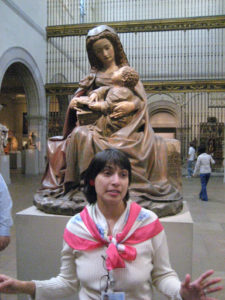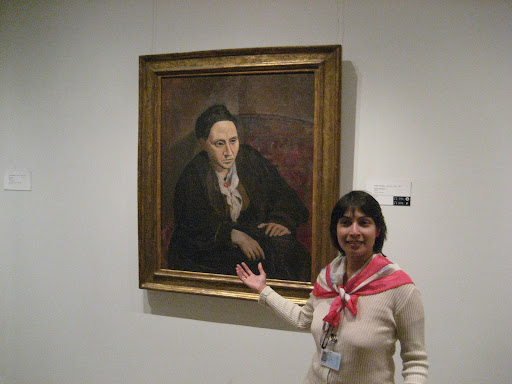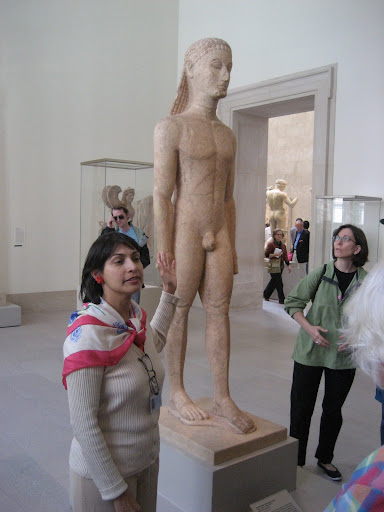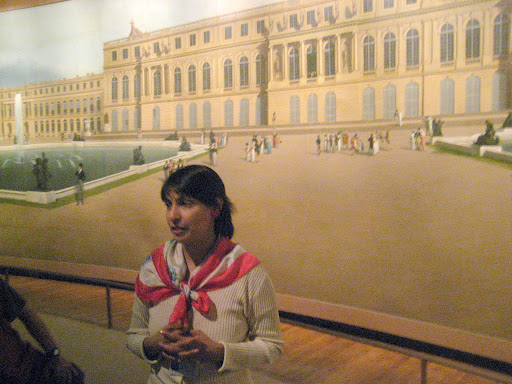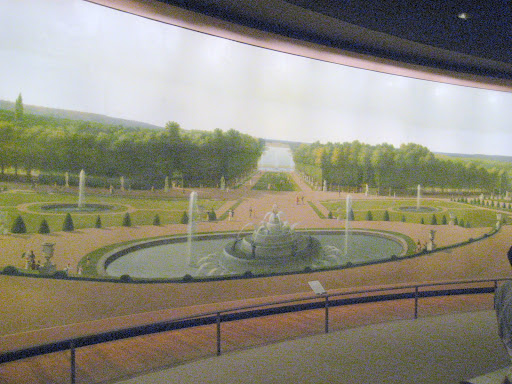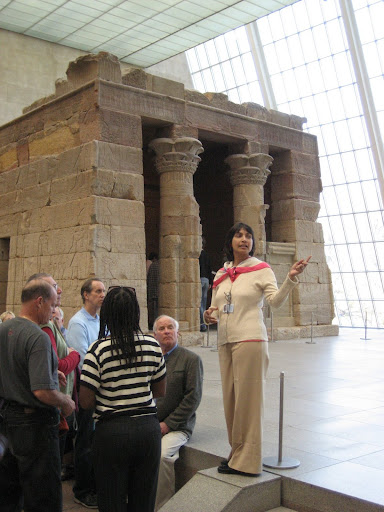THE FORTUNE TELLERS
Researched by Rochelle Almeida
60.30
Artist: Georges de La Tour (1593-1652).
Oil on Canvas
French
Probably 1630s.
Who is this painting by?
This is a painting by Georges de La Tour, a French artist who lived from 1593 to 1652. The inscription on the painting includes the name of the town, Luneville, in Lorraine, France, where La Tour lived.
What does this painting depict?
This oil on canvas in entitled “The Fortune Teller” and that’s exactly what it portrays. A young man has stretched his hand forward to have his fortune read by an old gypsy crone. As she is in the process of revealing his future, her accomplices gathered around the young man are skillfully robbing him. This subject was popular among Caravaggesque painters throughout Europe in the 17th century.
What makes this painting significant?
The absolute detail of the scene depicted together with its tremendous realism makes this an outstanding example of the work of this artist. Deeply influenced by the style of the Italian Renaissance artist Caravaggio, La Tour presents the scene with almost photographic realism. We are able to see before our very eyes the conning of this naïve young man and we feel for him in his blindness while, at the same time, tending to feel amused by the skills of the thieves.
Visual Details:
This painting is arresting because while the main character, the young man, is its central focus, we do see a number of minor characters that are given as much importance in La Tour’s depiction of them. Though they are secondary to the scene, these, nonetheless, hold us spellbound.
Young Man:
Notice the foppishness of the young man’s dress. He is clearly of aristocratic lineage, as is evident in the elegant cut of his clothes and their fine fabric. Indeed, this canvas has given the artist the opportunity to present the clothing styles of the time with such an abundance of color and pattern and cut. His sage green tunic contrasts brilliantly with his scarlet leggings and the two-toned motif is repeated in his collar, sleeves and on his belt. He wears a jaunty beret-like cap on his head and looks askance at the woman as she reads his fortune. La Tour presents a scenario in which money has just changed hands. Indeed, his coins have crossed the old crone’s palms, but the young man doesn’t realize that before the session is through, he will have paid far more than the single coin for the privilege of having his fortune told.
Old Crone:
But while the young man’s clothes are delineated in great detail, so too is the outfit of the gypsy woman. Her skin tones indicate that she is of Oriental origin, probably from Egypt, from where most fortune tellers came—hence the word “gypsy” which is said to be a derivative of the word “Egyptian”. Her garment is equally colorful and vividly patterned. The close pattern of the embroidery gives a richness to her garments. She watches her subject’s face closely, which is somewhat ironic, because one would expect her to be leaning forward to read the lines of his palms instead. On her head, she wears an elaborate turban-style headdress. Her face is deeply wrinkled, indicative of her age. She has obviously been doing this kind of trickery for a long time and is accustomed to its machinations.
Young Woman in Between:
Between the young man and the old crone is a young woman whose gaze is also fixed on the fop. Though she looks slyly out of the corner of her eyes at him, her fingers are busy with the watch that hangs from a chain around his waist. Gypsies were known to work in this fashion in groups of accomplices. As soon as one item had been successfully stolen, it would be passed around to another group member who would quickly disappear with the booty. She too wears a white scarf-like head dress which is wound like a close fitting cap around her head. Some critics have pointed out the similarity in the facial features of this young woman and the young man who is being robbed.
On the left hand side of the canvas:
are two more characters, also members of this gang of thieves. The woman on the far left, whose white clad sleeve dominates the left hand side of the composition, is reaching into the young man’s trouser pocket to relieve him of his money-pouch. She wears a gaudy scarf around her head.
Standing right next to her, is a woman, half hidden from the angle at which we are viewing this scenario. Her limp dark locks of hair hang about her face, half concealing her features. She too stares intently at the young man.
The background to the canvas is a rich deep tan which perfectly complements the dark, bright colors of the costumes of the group. The lighting effects are so subtle that the background seems to fluctuate in tone from a light tan on the sides to deep chocolate brown in the center.
Conclusion:
This painting can be interpreted as a genre or theatrical scene or as an allusion to the parable of the Prodigal Son from the New Testament. A genre painting in one in which the artist presents a slice of ordinary life and certainly this street scene, not uncommon in those days, in seventeenth century Lorraine, is a fine slice of life. Certainly this man has more money than management skills and he is easily taken in by the duplicity and skills of these swindlers.
Bibliography:
Pariset, Francois-Georges: “A Newly Discovered La Tour: The Fortune Teller”. MMA Bulletin, Vol. 19, No. 7, March 1961.

